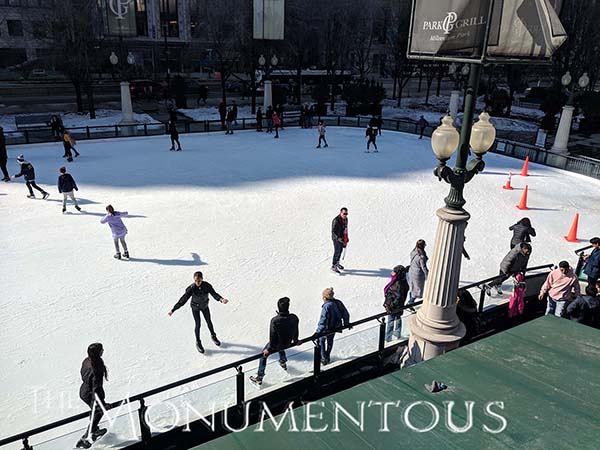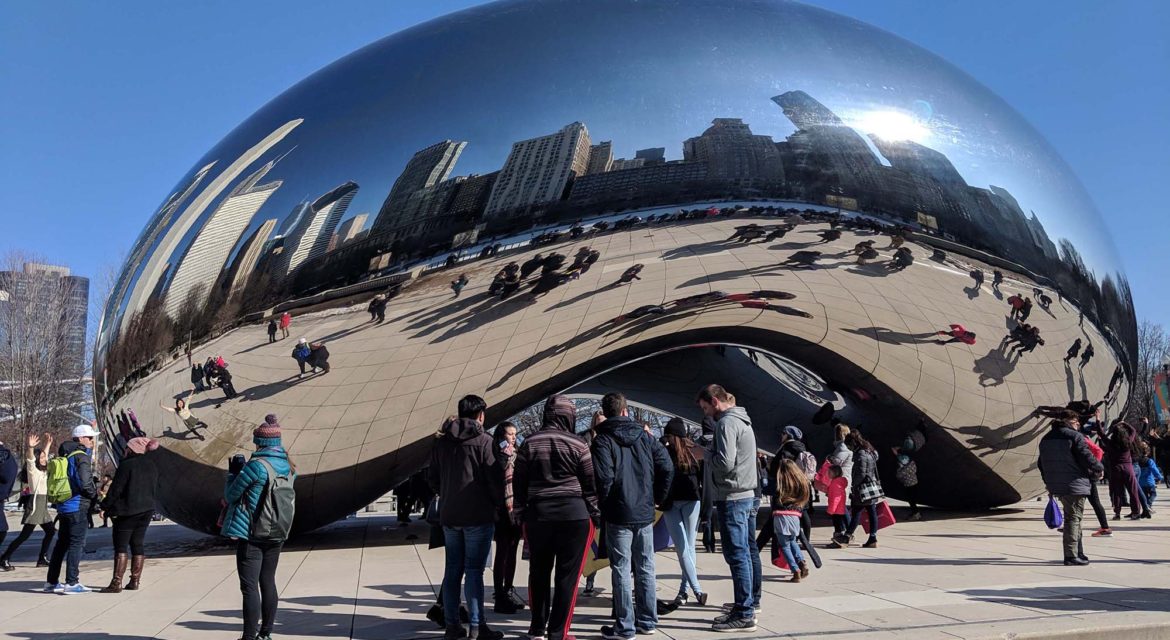 There are few parks in the world that have been able to impact an entire city the way Millennium Park has done for Chicago, Illinois. Described by some as the ultimate example of successful urban planning and others as a place that could trigger a new way of thinking about public outdoor spaces, Millennium Park has won awards and been named as a “must-see place”, all of which have helped it to make a measurable impact on the culture and economy of the city.
There are few parks in the world that have been able to impact an entire city the way Millennium Park has done for Chicago, Illinois. Described by some as the ultimate example of successful urban planning and others as a place that could trigger a new way of thinking about public outdoor spaces, Millennium Park has won awards and been named as a “must-see place”, all of which have helped it to make a measurable impact on the culture and economy of the city.
Millennium Park has been able to make this kind of impact on account of the numerous attractions and experiences that it has enabled for everyone. The logistics and financial challenges associated with doing so proved to be a challenge, but by taking a creative approach to resolving these issues, the park has become a place that attracts residents from all over the city and visitors from across the globe.

From Industrial Wasteland to World-Class Park
Millennium Park resides in an area that was once considered sacred to the Illinois Central Railroad. The organization controlled the space from the 1850s until 1997, when a vision around turning the area into a new public space took shape. The space had been covered with unsightly railroad tracks and parking lots for decades and served as little more than an industrial wasteland on Chicago’s lakefront throughout the 20th century.
 The original plan called for a 16-acre park and outdoor music venue in the traditional Beaux Arts style of nearby Grant Park. The involvement of world-renowned architect Frank Gehry helped convince many across the city that the project would not only come to fruition, but that it could help take Chicago into the 21st century.
The original plan called for a 16-acre park and outdoor music venue in the traditional Beaux Arts style of nearby Grant Park. The involvement of world-renowned architect Frank Gehry helped convince many across the city that the project would not only come to fruition, but that it could help take Chicago into the 21st century.
Originally intended to tie into the turn of the millennium, construction began in October 1998, but wasn’t finished in time to mark the occasion. Millennium Park officially opened in a ceremony on July 16, 2004, four years behind schedule. While many complained about the construction delays and cost overruns, the completed park saw near-universal praise.
That acceptable is based in large part on art, architecture, monuments, landmarks and landscape that have come to define Millennium Park. Many of these features were only possible because of the public-private model that helped to make these features a reality.

Unique Public-Private Partnershis
With an original proposed budget of $150 million, the eventual $475 million that Millennium Park cost underscores the incredible costs and challenges that are associated with projects of this scope. However, the unique approach to public-private partnerships helped to offset these costs and ensure that the vision for Millennium Park that would take Chicago into the next century could actually become a reality.
 Sponsors were sought by invitation only, which proved to be an effective strategy for raising money from the private sector. BP America Inc. donated $5 million for the naming of the BP Footbridge, which is a 925-foot-long winding Frank Gehry-designed bridge that provides great views of Lake Michigan and the Chicago skyline.
Sponsors were sought by invitation only, which proved to be an effective strategy for raising money from the private sector. BP America Inc. donated $5 million for the naming of the BP Footbridge, which is a 925-foot-long winding Frank Gehry-designed bridge that provides great views of Lake Michigan and the Chicago skyline.
To fund Gehry’s bandshell design for the pavilion, the Jay Pritzker family donated $15 million. An additional nine donors committed $10 million. The outdoor concert venue seats 4,000 with room for an additional 7,000 on the Great Lawn. The Pritzker Pavilion became the home of the Grant Park Symphony Orchestra and Chorus and the Grant Park Music Festival, the nation’s only remaining free, municipally supported, outdoor, classical music series.
The Millennium Monument sits in Wrigley Square, named after the William Wrigley, Jr. Foundation, which contributed $5 million to the monument. The pedestal of the monument is inscribed with the names of the 115 financial donors who made the 91 contributions of at least $1 million each to help pay for Millennium Park.
These are just a few examples of how specific monuments and landmarks within Millennium Park were enabled thanks to private contributions. While some have criticized the mixed-use of taxpayer and corporate funding that tied into the naming rights for sections of the park, these monuments exist on account of such funding efforts, and they have come to define the Park itself.

The Monuments and Attractions of Millennium Park
While Millennium Park has numerous features and attractions, far and away the most notable and famous of those is Cloud Gate, also known as “The Bean”. Among the largest sculpture of its kind in the world, it is 66-feet long by 33-feet high and weighs 100 tons. Made of polished stainless steel plates, the sculpture resides within the AT&T Plaza, underscoring the importance of the public-private partnerships that were enabled in the space.
 Crown Fountain consists of two 50-foot glass block towers at each end of a shallow, sparkling reflecting pool. Named in honor of Chicago’s Crown family, the towers project video images of diverse Chicago citizens spitting out water. The fountain promotes physical interaction between the public and the water in an artistic setting and is incredibly accessible to everyone.
Crown Fountain consists of two 50-foot glass block towers at each end of a shallow, sparkling reflecting pool. Named in honor of Chicago’s Crown family, the towers project video images of diverse Chicago citizens spitting out water. The fountain promotes physical interaction between the public and the water in an artistic setting and is incredibly accessible to everyone.
The 2.5-acre (1 hectare) Lurie Garden is something for outdoor enthusiasts. Hundreds of colorful flowers and green shrubs cover the garden, which contains mostly native plants, a reference to the tall prairie grasses found in Illinois. A 15-foot-high (4.5 m) “shoulder” hedge represents Carl Sandburg’s famous description of Chicago as the “City of the Big Shoulders”.
 The McCormick Tribune Plaza & Ice Rink is a multipurpose venue that operates as a free public outdoor ice skating rink for part of the year while serving as the Plaza at Park Grill or Park Grill Plaza the rest of the year. The Park Grill Plaza is affiliated with the 300-seat indoor Park Grill restaurant, located beneath the AT&T Plaza and Cloud Gate. These experiences and economic opportunities underscore the impact Millennium Park has enabled for Chicago as a whole.
The McCormick Tribune Plaza & Ice Rink is a multipurpose venue that operates as a free public outdoor ice skating rink for part of the year while serving as the Plaza at Park Grill or Park Grill Plaza the rest of the year. The Park Grill Plaza is affiliated with the 300-seat indoor Park Grill restaurant, located beneath the AT&T Plaza and Cloud Gate. These experiences and economic opportunities underscore the impact Millennium Park has enabled for Chicago as a whole.

The Economic Impact of a Chicago Icon
The economic impact of Millennium Park can be seen in countless ways across the city. Whether it’s the souvenirs that showcase monuments like Cloud Gate or advertisements that pay to feature such attractions, the Park has been able to create revenue directly and indirectly in ways that were not previously possible.
 In terms of indirect revenue, in 2017, Millennium Park was the top tourist destination in Chicago and the Midwest and placed among the top ten in the United States with 25 million annual visitors. Millennium Park had 3 million visitors in its first year. Just like the Chicago Riverwalk, Millennium Park has been able to impact the identity of the entire city to attract audiences from all over.
In terms of indirect revenue, in 2017, Millennium Park was the top tourist destination in Chicago and the Midwest and placed among the top ten in the United States with 25 million annual visitors. Millennium Park had 3 million visitors in its first year. Just like the Chicago Riverwalk, Millennium Park has been able to impact the identity of the entire city to attract audiences from all over.
Regarding direct revenue, Millennium Park is available to book for several different types of private events, which include corporate receptions, wedding ceremonies, and fundraising events. Almost all of Millennium Park was closed for a day for corporate events in 2005 and 2006. On September 8, 2005, Toyota Motor Sales USA paid $800,000 to rent nearly all of the venues at the park. Permits are set on a negotiated basis for movies, commercials and other “large-scale” projects shot at the park.
The public may freely photograph Cloud Gate, but permission from the artist or the City of Chicago (which has licensed the art) is required for any commercial reproductions of the photographs. That limitation provides the city and stakeholders with another important means of potential revenue. The city has made efforts to loosen rules regarding photographs and photography though.
The community surrounding Millennium Park has become one of the most fashionable residential addresses in Chicago. In 2006, Forbes named the park’s 60602 zip code as the hottest in terms of price appreciation in the country. The park has also been credited with increasing residential real estate values by $100 per square foot.
Just like other famous parks that have had a massive direct and indirect economic impact on the entire city and community, the benefits that Millennium Park have enabled go far beyond the bottom line. The space has become an important element of the Chicago community as a whole.

Cultivating the Culture and Community of Chicago
 While ice-skating is an annual tradition at Millennium Park, it has also been able to pull in and create other annual festivities that have become part of the culture of the community. In 2015, Millennium Park became the location of the city’s annual Christmas tree lighting. Events like the Chicago Blues Festival and the SummerDance Celebration have also become important events that take place in the Park.
While ice-skating is an annual tradition at Millennium Park, it has also been able to pull in and create other annual festivities that have become part of the culture of the community. In 2015, Millennium Park became the location of the city’s annual Christmas tree lighting. Events like the Chicago Blues Festival and the SummerDance Celebration have also become important events that take place in the Park.
During the summer, anyone can kick off their weekend with a free morning workout on Millennium Park’s Great Lawn. In addition to the Grant Park Symphony Orchestra and Chorus and the Grant Park Music Festival, the Jay Pritzker Pavilion hosts a wide range of music series and annual performing arts events. Performers ranging from mainstream rock bands to classical musicians to opera singers have appeared at the pavilion, which also hosts physical fitness activities such as yoga.
 Seasonal events that range from caroling at Cloud Gate to a Dance Along with the Nutcracker further showcase the kind of community engagement that Millennium Park enables throughout the year. These activities vary depending on the season but have proven to attract the attention of both residents and visitors in an especially powerful way.
Seasonal events that range from caroling at Cloud Gate to a Dance Along with the Nutcracker further showcase the kind of community engagement that Millennium Park enables throughout the year. These activities vary depending on the season but have proven to attract the attention of both residents and visitors in an especially powerful way.
The numerous experiences that visitors can have directly with the monuments within and throughout the park have also proven to significantly impact the culture of the city. These interactions personalize the attractions in a meaningful way and have allowed Millennium Park to become an essential part of the Chicago community. That resonance has created a legacy which is defining the present and future of the city.

A Destination for Chicagoans and Visitors
 Free to access with hundreds of free cultural programs including concerts, exhibitions, tours, and family activities, Millennium Park has become a destination for Chicagoans and visitors alike. By becoming such an essential element of maps and tour guides, Millennium Park has been able to reshape the perception of the city for both audiences.
Free to access with hundreds of free cultural programs including concerts, exhibitions, tours, and family activities, Millennium Park has become a destination for Chicagoans and visitors alike. By becoming such an essential element of maps and tour guides, Millennium Park has been able to reshape the perception of the city for both audiences.
In winning numerous awards and becoming a hub of activity all year round, Millennium Park has become one of Chicago’s top tourist destinations. Doing so has redefined the present of the city and is set to positively impact the future of it in countless ways.


